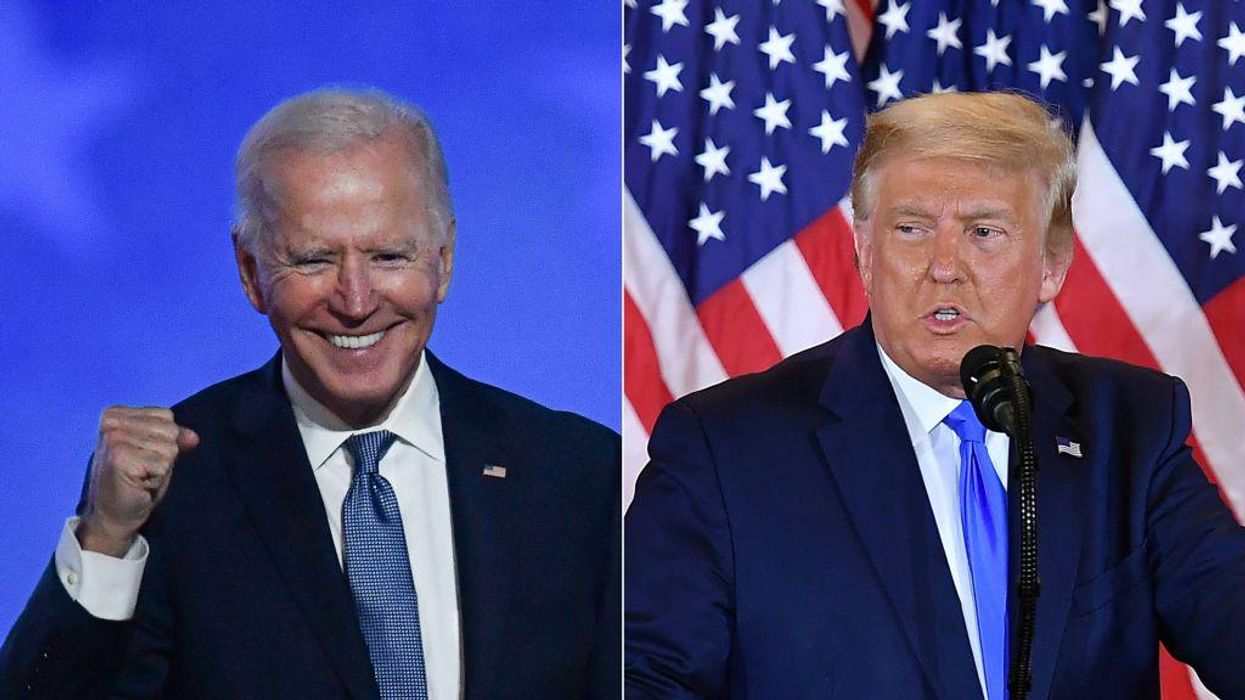
ANGELA WEISS, MANDEL NGAN/AFP via Getty Images

If you're one of the people who thought the polling in the 2020 presidential election was bad, don't worry, the industry agrees with you.
An expert panel assembled by the trade association representing pollsters released preliminary findings that found the polling in last year's election was the most inaccurate political polling in 40 years. The polls overestimated support for Democratic candidate Joe Biden by almost 4 percentage points in the final two weeks of the campaign, the Wall Street Journal reported Thursday.
It was a larger error than in 2016, when the polling overestimated support for Hillary Clinton by 1.3 points and Donald Trump shocked the world by winning the Electoral College and the presidency.
In fact, the last time pollsters were this wrong was way back in 1980, when the polls failed to predict the size of Ronald Reagan's landslide victory over Jimmy Carter, who performed 6 percentage points worse than the polls predicted.
In 2020, support for Democrats was overstated "in every type of contest we looked at: the national popular vote, the state-level presidential vote as well as senatorial and gubernatorial elections,'' said Joshua D. Clinton, a professor of political science at Vanderbilt University who was the lead expert on the panel put together by the American Association for Public Opinion Research.
"This was true no matter how respondents were polled. It didn't matter whether you're doing online or telephone polls. A similar level of error was pervasive,'' said Clinton, who discussed the preliminary findings at the trade association's annual conference Wednesday.
There are no exact answers on why the polls were so wrong and how the industry can correct the problem, but the expert panel raised several possibilities. One is that some voters in 2020 declined to participate when pollsters called, which skewed the results.
Another possible explanation is that Trump was able to turn out voters in 2016 and 2020 who had previously voted infrequently or never voted before and did not identify with the Republican or Democratic political parties. It's difficult for pollsters to find a sample of people that looks like the whole electorate when they don't know what the electorate itself looks like.
A third explanation is that Biden voters were more likely to answer polls than Trump supporters, who may have been dismissive of polling because of Trump's various criticisms of the "fake news polls." If Trump voters weren't speaking to pollsters, then the polls would obviously slant toward Biden.
"The people who responded to polls were different than those who didn't. This is the first election where that was clear," Clinton said. Any one of these possibilities, or a combination of them, could explain why the polls were wrong.
As for how the industry corrects moving forward, Dan Merkle, president of the trade association, noted that in the 2018 midterm elections and the runoff Senate elections in Georgia earlier this year the polling was highly accurate.
"So, it's possible that these may be short-term phenomena that will abate when Trump is not on the ballot, or in the post-pandemic era," he said. "On the other hand, it could be a broader issue of conservatives becoming less likely to respond to polls in general.''